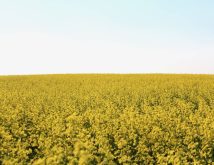Thirteen seed companies, processors and researchers of camelina have formed the first trade association focused on camelina production and processing in North America. The North American Camelina Trade Association (NACTA) will work to promote research, production and the development of new markets for camelina.
Camelina sativa, also known as gold of pleasure or false flax, is a member of the mustard family and a distant relative to canola. It is a fast-growing, short-seasoned crop that requires less water and fewer inputs than many crops. Its high oil content and other properties make it a great fit for biodiesel production, and interest in the crop has grown significantly in recent years.
Read Also

Journal pulls long-cited glyphosate study for ethics violations
The journal Regulatory Toxicology and Pharmacology has retracted a 2000 Monsanto-linked glyphosate review, drawing new scrutiny as Bayer faces mounting legal pressure.
“The formation of the North American Camelina Trade Association is another important step in building a strong, sustainable foundation for camelina production in the U. S. and Canada,” said Scott Johnson, general manager of Sustainable Oils, and president of NACTA.
The first project funded by NACTA, through a grant from the Montana Department of Agriculture, was a research study to determine the level of camelina meal, the byproduct of camelina oil extraction, which can be fed to poultry. On Feb. 6, the FDA issued a letter allowing the use of camelina meal in the diets of poultry broilers up to 10 per cent of the weight of the total ration. NACTA members are working with the FDA and the American Association of Feed Control Officials (AAFCO) to secure “Generally Recognized as Safe” certification for poultry and additional livestock species such as swine, beef cattle, and dairy cattle, to broaden revenue opportunities for growers of camelina.
The formation of a trade association is just one of several milestones that have been reached over the past year, said Johnson. Highlights include:
New markets: Japan Airlines successfully completed a historic demonstration flight using camelina-based jet fuel. The Jan. 30 flight was the first airline to fly using camelina-based jet fuel and highlights the exciting potential for camelina as a sustainable biofuel feedstock.
Herbicide registration: Poast herbicide has received registration for use on camelina sativa. Poast is a selective, broad-spectrum, post-emergence herbicide for the control of grass weeds that will provide a new, effective option for weed control in camelina production.
Limited camelina meal approval: Approval from the Center for Veterinary Medicine, a department of the Food & Drug Administration, for the use of camelina meal in the diets of feedlot beef cattle and growing swine up to two per cent of the weight of the total ration.
Continued research efforts: Public and private researchers are focused on increasing the yield and oil content of camelina, as well as identifying the most effective production practices. In 2008, more than 100 research trials and studies were conducted across North America.
The first annual meeting of the North America Camelina Trade Association is planned for October 2009. More information is available via e-mail: [email protected].














